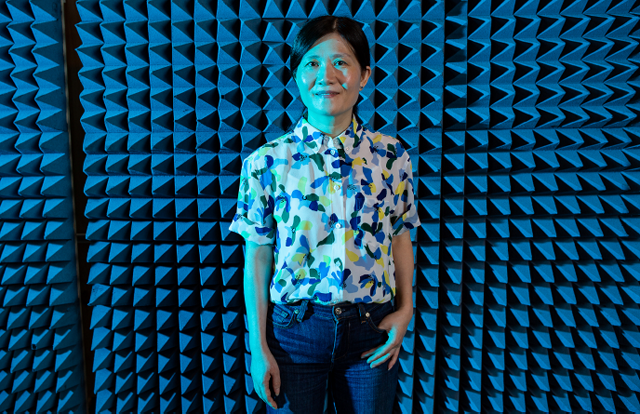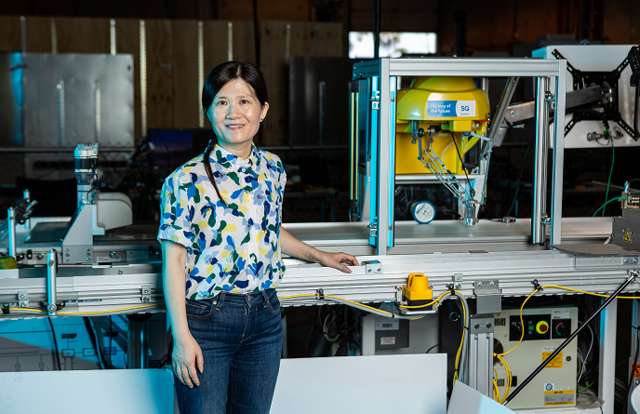Qualcomm Inventor Dr. Xiaoxia Zhang on How Your Phone Finds the Time To Talk to Cell Towers in 5G
Welcome to Qualcomm Invents. In this series, we’re talking with some of Qualcomm’s most prolific inventors about their work, the impact of their inventions, and their inspiration.
Do you call friends and family on your smartphone? Scroll through social media when you’re in the checkout line at the grocery store? Watch YouTube while riding the train to work? If the answer is yes, you have Qualcomm Technologies, Inc. inventor Dr. Xiaoxia Zhang to thank, whose work helped make all that (and more) possible.
Dr. Zhang joined Qualcomm after completing her PhD in electrical engineering at Ohio State University in 2002. She’s worked on key aspects of 3G, 4G, and 5G system design, and now, as our Senior Director of Technology, she’s leading research projects in industrial IoT development, shared/unlicensed spectrum, and RAN disaggregation on 5G technology. With more than 2,500 granted patents, she’s one of Qualcomm’s most prolific inventors.
We recently caught up with Dr. Zhang to discuss her thoughts on the culture of innovation at Qualcomm, her work in 3G/4G/5G, and her current project in industrial IoT.
The following interview has been edited for clarity and length.
Did you always know you wanted to be an inventor? If not, what or who inspired you?
I didn't know I wanted to be an inventor before I joined Qualcomm, but the culture here was, and continues to be, a huge inspiration. When I started at the company, we were at the tail end of working on 3G and were transitioning to 4G. During that time, I got to work with& Durga Malladi, who is now Qualcomm Technologies Senior Vice President & General Manager for Cellular Modems & Infrastructure. He was my lead and gave me great guidance and support; I learned a lot from him by observing how he does things. That helped me hone my own instinct for finding problems and coming up with ideas to solve them.
Your work has centered around the different protocols that phones and other devices use to talk to the cell network. Can you explain how this works?
Modern wireless communications involving many different devices with varied usage scenarios are quite complex. Let me provide a high-level, general analogy describing how devices talk. To talk to a cell tower, your phone first needs to send what’s called a scheduling request. Think of the cell tower like a teacher in a busy classroom full of students, and you’re a student raising your hand with something to say. The tower hears your request, and tells when and where you can send the data and for how long – like a teacher calling on students in order based on their request. The tower also asks your phone what the channel state is like – basically how good the cell environment is around you, how clearly the signal can be sent back and forth – and then an acknowledgment feedback, which asks your phone how well it’s hearing and understanding the information sent.
These three signals are required for each connection in order to optimize all the different conversations going on in the network – but it can be really inefficient to always separately send each signal one at a time from each phone. So, to help solve these complex communications challenges, I came up with an idea called “simultaneous transmission joint coding”, where you encode the signals simultaneously to have critical information transmit at the same time and make the system’s operation as efficient as possible. This system enables your phone to connect to the network, and quickly and efficiently share the massive amounts of data we use for video calls, streaming, web browsing, etc., and was a really fundamental technique that went into the core of 4G and now 5G.
You’re currently leading Qualcomm’s project focusing on industrial IoT. Can you tell us a bit about what this work entails and the goal of the project?
Right now, most industries are relying heavily on wired connections – especially in areas like factories. They have wires everywhere, and those wires make it difficult to upgrade the system each time you need to adjust or change your factory line or make a new product. We’re working to make 5G connectivity as strong as wired connectivity in industrial applications — with ultra-reliability and low latency — and the added benefit of more flexibility and easier redeployments on factory floors. Really cutting-edge stuff.
Looking ahead to 6G, what is something you’re most excited about?
In early 6G talks, people are discussing different use cases that may have already started in 5G and could be enhanced in 6G. For example, figuring out ways to use the network to actually give you real-time data on what’s around you. This could really help factories to quickly determine the layout of their machines or assembly line. So much of wireless research is like this: you iterate and improve on what’s been done to meet new demands and grow capabilities.
You started at Qualcomm right after you finished your PhD in 2002. How has being an inventor changed?
I think the biggest difference is what we’re trying to achieve with the technologies we’re working on. In the beginning, 3G and 4G were the backbone of getting phone protocols and networks to work. When we moved to 5G, we saw how it is expanding into multiple vertical domains – the introduction of using unlicensed spectrum, industrial IoT use cases, etc. It's no longer about just establishing phone protocols; there are now so many use cases and problems for people to solve.
What advice would you give to other inventors?
Have sharp eyes to identify problems and discuss it with others. Talking it out helps you clear your mind; plus, others may offer insight that gives you a more comprehensive understanding of the problem. And most of all, you need to have a good team to work with if you’re going to be a good inventor. It’s all about solving problems – and doing it together.



